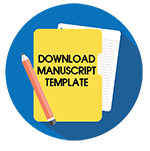Effect of Peanut Types on Patties Analogue Characteristics
DOI:
https://doi.org/10.12928/jafost.v1i1.1475Keywords:
Mung Bean, Kidney Bean, Peanut, Patties AnalogAbstract
Patties analogs are products made from vegetable protein that is not from meat but resembles the nature of meat. Patties analog has several features, including being made or formulated so that the nutritional value is higher than the original meat. The purpose of the study was to determine the process of making patties analog, to determine the formulation of mung bean flour, kidney bean flour and peanut flour combined with wheat flour, to produce the best patties analog. Moreover, it is to determine the yields physical, chemical, and sensory of patties analog produced. The main ingredients used are kidney bean flour, mung bean flour, and peanut flour, as well as additional ingredients such as oyster mushrooms, high protein wheat flour, and seasonings with the same percentage. Based on the analysis of the water content of the three samples, the highest value is the water content of kidney bean flour patties (25.88%). The highest ash content is indicated by mung bean flour patties which is equal to 0.08%. The highest fat content obtained by peanut patties with a value of 0.4% and the highest WHC is found in peanut patties that is 2.9867%. Meanwhile, based on the organoleptic test, the most preferred patty analog by panelists is a patty made of mung bean flour.
References
Afrisanti D. W. (2010). Kualitas Kimia dan Organoleptik Nugget Daging Kelinci Dengan Penambahan Tepung Tempe. Skripsi. Fakultas Pertanian. Universitas Sebelas Maret Surakarta.
AOAC. (1995). Official Methods of Analysis of Association of Official. Analytical Chemist. AOAC International. Virginia USA
AOAC. (2005). Official Methods of Analysis of The Association of Official. Analytical Chemist. AOAC Inc., Washington.
Astawan M. (2009). Sehat dengan Hidangan Kacang dan Biji-Bijian. Jakarta: Penerbit Swadaya.
Gómez-guillén, M., Turnay, J., Fernández-Díaz, M., Ulmo, N., LizaKBe, M., & Montero, P. (2002). Structural and physical properties of gelatin extracted from different marine species: a comparative study. Food Hydrocolloids, 16(1), 25–34.
Hairunnisa O, E. Sulistyowati dan D. Suherman. (2016). Pemberian Kecambah Kacang Hijau (Tauge) terhadap Kualitas Fisik dan Uji Organoleptik Bakso Ayam. Jurnal sains peternakan. 11 (1) : 39-47.
Handayani, N. A., Santosa, H., Kusumayanti, H. (2014). Fortifikasi inorganik zink pada tepung ubi jalar ungu sebagai bahan baku bubur bayi instan. Reaktor, 15(2), 111-116
Hudaya S. (1999). Modul Perkuliahan. Teknologi Pangan. Fakultas Pertanian, Universitas Padjajaran. Jatinagor.
Koswara, S. (1995). Teknologi Pengolahan Kedelai. Jakarta: Pustaka Sinar Harapan.
Kusnadi, D.C. Bintoro, V.P, dan A.N. Al-Baari. (2012). Daya ikat air tingkat kekenyalan dan kadar protein pada bakso kombinasi daging sapid an daging kelinci. Jurnal Aplikasi Teknologi Pangan. 1:2
Kusnandar, F. (2010). Kimia Pangan: Komponen Makro. Jakarta: Dian Rakyat.
Kusumaningrum A dan Winiati P Rahayu. (2007). Penambahan Kacang-kacangan dalam formulasi makanan pendamping air susu ibu (MO-ASI) berbahan dasar pati aren (Arenga pinnata (Wurmb) Merr)). Jurnal Teknologi dan Industri Pangan. 18 (2) : 73-80.
Lindriati T, Herlina dan Jefrinka Nelza E. (2018). Sifat Fisik Daging Analog Berbahan Dasar Campuran Tepung Porang (Amorphophallus Oncophyllus) Dan Isolat Protein Kedelai. Jurnal Teknologi Pertanian.Vol 22 (2).
Malindo R, Edison dan N Ira Sari. (2010). Pengaruh Penambahan Tepung Kacang Hjau (Vigna Radiata) Terhadap Mutu Bakso Ikan Lele Dumbo (Clarias Gariepinus). Jurnal Perikanan. 2 (11).
Muawanah, A. (2007). Pengaruh lama inkubasi dan variasi jenis starter terhadap kadar gula, asam laktat, total asam dan pH yoghurt susu kedelai. Jurnal Valensi. 1 (1) : 1 – 6.
Nurhadi, Bambang., S Rahimah dan I Munawaroh. (2010). Kajian Daya Rehidrasi Sugar Coated Puffed Cereal dengan BeKBagai Konsentrasi Larutan Sukrosa. Skripsi. Bandung: Universitas Padjajaran.
Pangastuti, H. A., D. R. Affandi dan D. Ishartani. (2013). Karakteristik sifat fisik dan kimia tepung kacang merah (Phaseolus vulgaris L.) dengan beberapa perlakuan pendahuluan. J. Teknosains Pangan. 2 (1) : 20 – 29.
Radiati A dan Sumarto. (2016). Analisis Sifat Fisik, Sifat Organoleptik, dan Kandungan Gizi pada Produk Tempe dari Kacang Non-Kedelai. Jurnal Aplikasi Teknologi Pangan 5 (1) : 16-22.
SNI. (1995). Syarat Mutu Bakso dan Formulasi Bakso (SNI 01-3818- 1995). Jakarta: Badan Standarisasi Nasional.
Sudarmadji, S; B. Haryono dan Suhardi. (1989). Analisa Bahan Makanan dan Pertanian. Yogyakarta: Penerbit Liberty.
Triatmojo, S. (1992). Pengaruh Pengantian Daging Sapi dengan Daging Kerbau, Ayam dan Kelinci pada Komposisi dan Kualitas Bakso. Laporan Penelitian Fakultas Peternakan, Universitas Gadjah Mada, Yogyakarta.
Wahyuningsih, Sri. (2014). Komposisi Proksimat, Tingkat Kekerasan dan Daya Terima Brownies yang dibuat dengan Menggunakan Jenis Telur yang BeKBeda. Jurnal. Surakarta: Fakultas Ilmu Kesehatan. Universitas Muhammadiyah Surakarta.
Winarno, F.G., (2004). Kimia Pangan dan Gizi. Jakarta: Gramedia Pustaka Utama.
Yulifianti et al. (2014). Teknologi Pengolahan dan Produk Olahan Kacang Tanah. Balai Penelitian Tanaman Aneka Kacang dan Umbi. Malang Balai Besar Penelitian dan Pengembangan Pascapanen Pertanian. Bogor. 376.
Downloads
Published
Issue
Section
License
Copyright (c) 2020 Nur Annisa Metya Novikasari, Anita Kurnia Wati, Nur Khikmah, Iffah Muflihati

This work is licensed under a Creative Commons Attribution-ShareAlike 4.0 International License.
Authors who publish with the Journal of Agri-food Science and Technology (JAFOST) agree to the following terms:
- Authors retain copyright and grant the journal right of first publication with the work simultaneously licensed under a Creative Commons Attribution License (CC BY-SA 4.0) that allows others to share the work with an acknowledgment of the work's authorship and initial publication in this journal.
- Authors are able to enter into separate, additional contractual arrangements for the non-exclusive distribution of the journal's published version of the work (e.g., post it to an institutional repository or publish it in a book), with an acknowledgment of its initial publication in this journal.
- Authors are permitted and encouraged to post their work online (e.g., in institutional repositories or on their website) prior to and during the submission process, as it can lead to productive exchanges, as well as earlier and greater citation of published work.



